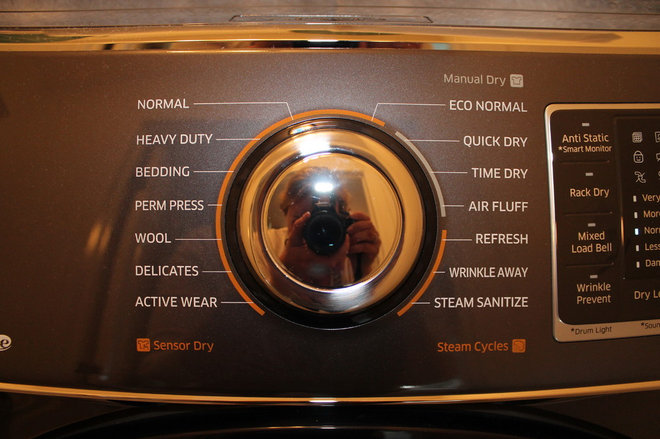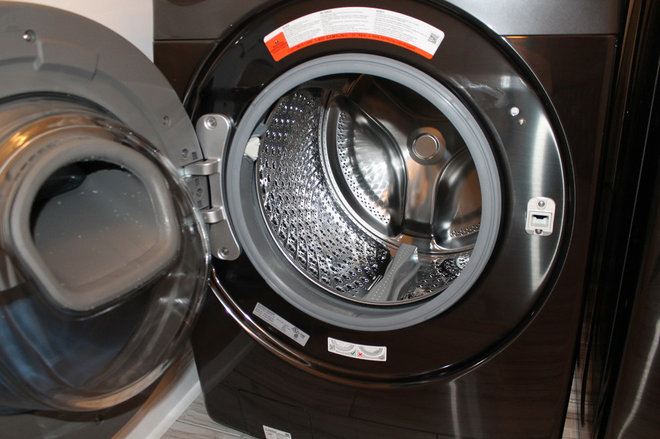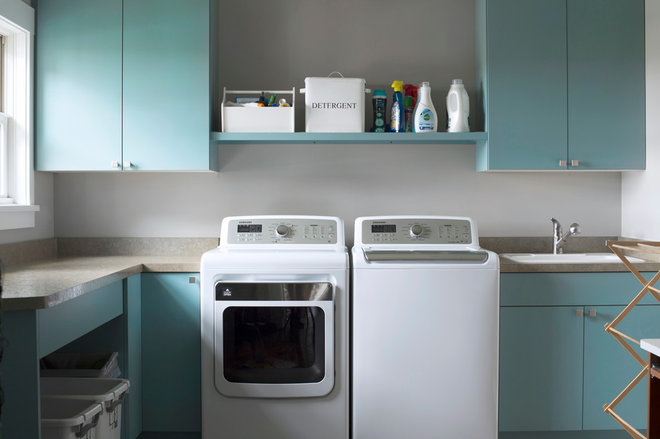How to Keep Your Washing Machine Clean
In addition, the newer HE (high efficiency) machines are especially prone to developing mold and mildew, especially if you live in an area with high humidity levels, which can lead to an odor developing both in the machine itself and on your “clean” clothes. “We take our washing machines for granted,” says Taryn Brucia, a public relations director at LG Electronics. “They do some dirty jobs. We should give them some love.” With that in mind, here’s how to clean a washing machine.
Most manufacturers recommend cleaning the machine once a month, although a quick internet search and survey of friends and family will confirm that the majority of us are still wrapping our heads around the idea of cleaning the machine.
Others, though, clean theirs even more often. “I have a separate cleaning cycle as an option on my washing machine and run that cycle after I wash cleaning rags every week,” says Becky Rapinchuk of Clean Mama. Fortunately, the process is fairly painless, especially since the machine itself does most of the work.
Identify Your Machine and Select Your Cleanser
The type of washing machine you have will dictate which method you use to clean it. HE front loaders and top loaders need one approach; top-loading non-HE machines need a slightly different approach.
Before you start, decide what type of cleanser you want to use: white vinegar, bleach or a commercial cleanser. Vinegar is nontoxic and readily available, making it a favorite for both Brucia and Rapinchuk, but some manufacturers recommend bleach or other chemical cleansers, so check the manual for your machine. If you are using a commercial product, follow the label’s instructions for the recommended amount.
Caution: Choose only one cleanser. You never want to mix these products.
A monthly cleaning is especially important if your HE machine has developed an odor. “Wiping down the interior of the washer with cleaner, using extra detergent or running everything on the longest, hottest cycle does nothing to help dissipate the scent,” Rapinchuk says, adding that doing this cleaning task will eliminate the odor and keep your washing machine “in tip-top condition.” Many newer machines have a clean cycle, which makes the process even simpler, but the basic procedure is the same whether you have that or not.
2. Choose the added rinse cycle if it’s available.
3. Fill the bleach dispenser with your cleanser choice.
4. Fill the tub to the highest level (this will probably be automatic with the clean cycle) and run the machine.
5. If you don’t have a second rinse cycle, run the rinse cycle again manually.
Don’t overlook cleaning the dispensers. Use vinegar or soapy water to wipe any detergent, bleach, fabric softeners or other laundry add-ins from the dispensers. “You can often just pop them out,” Brucia says. Wipe off all these areas with a cloth dipped in water and dry them with a microfiber cloth.
Finish by wiping down the controls and the outside of the machine with a microfiber cloth dipped in vinegar or an all-purpose spray. To make the exterior shine, dry with a microfiber cloth.
Although older machines don’t generally have a cycle for cleaning, you can easily create your own version. It involves a bit of a wait time between beginning the cycle and ending it, so use that time to clean other areas that won’t be reached by the water in the tub.
1. Choose the hot water setting and the longest cycle.
2. Fill the tub to the maximum level, then pause the machine.
3. Add 4 cups of white vinegar or 1 cup of bleach to the water and let the machine agitate for a minute or two.
If you can remove the bleach and fabric softener dispensers, do so and clean the areas beneath them with the cloth and cleaning solution as well. If they are fixed in place, clean them and the area around them. “Using vinegar will help eliminate the detergent buildup,” Brucia says.
Finally, clean the control panel and the outside of the machine with the cleaning solution or an all-purpose spray. Use a dry microfiber cloth to dry and polish the surfaces.
5. Restart the machine and finish the cycle. “You won’t smell the vinegar, but if you do, simply add another rinse cycle,” Rapinchuk says.
The experts also have some advice for preventing a buildup of dirt and odors between cleanings. If mold and mildew are a problem, leave the machine’s door or lid open after you finish a load of laundry so that the interior will dry out completely. Before you do this, make sure curious children and pets can’t get into the machine, especially if it’s a front-loading one. Some machines have latches designed to keep the door ajar without leaving it wide open.
Brucia also recommends wiping down the door or lid to get rid of any condensation. Wiping and drying the gasket around the door every time you finish a load of laundry will help prevent a buildup of dirt in that area. As a final tip, be sure to use the correct amount of detergent for your loads.






